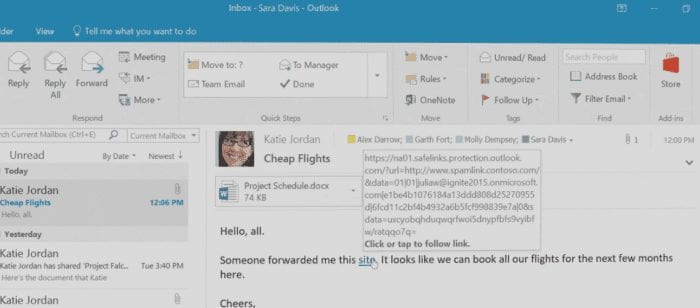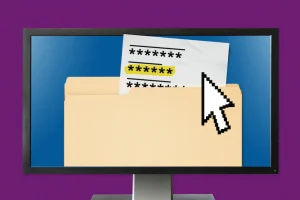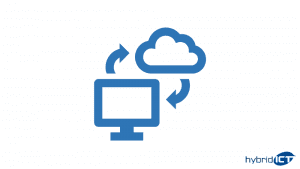Alarming but true, 91% of cyber attacks rely on victims clicking links in emails
- Around 25 per cent of Australian small to medium enterprises experienced a cybercrime in 2017[1]
- In a 2017 survey, small business operators rated cybercrime as the third biggest risk to their business [2]
- More than 70 percent of attacks target small businesses.
- As many as 60 percent of hacked small and medium-sized businesses go out of business after six months.

For a big business with access to extensive IT support and resourcing, a cyber security incident can be a bad day for business.
For a small business, such as a café, medical practice or tradesperson, with tight running costs and much fewer staff, it can be their last day of business.
We list below the top 4 ways you can prevent being a victim of cyber-crime.
Step 1 – Prevent Workstation Internet browsers from connecting to website containing Malware or Spoof login pages (Phishing Sites)
Our 24/7 Anti-Virus/Web Protection & Remote Monitoring Software prevents known threat sites from being accessed, rendering the link inoperable. This defence works irrespective or the Email Mailbox or Browser used.

Please contact us for a free quote.
Step 2 – Use Patching Software that continually updates workstation software (Windows, Adobe Reader, Java etc) with the very latest updates thus fixing vulnerabilities.
Our 24/7 Anti-Virus/Web Protection & Remote Monitoring Software constantly checks your software and operating system for known vulnerabilities and auto updates your system to plug known and emerging threats. This defence works works on Windows and Macs.
Please contact us for a free quote.
Step 3 – Stop the Emails getting through to Mailboxes
When using Microsoft Hosted Exchange Mailboxes a $3 per month add-on called “Advanced Threat Protection” or “ATP” provides industry best email protection available. (Click on the video below)
Step 4. Securing Microsoft account Access with MFA or 2FA
Securing access to your emails (using Microsoft Hosted Exchange) or data (OneDrive, SharePoint) is done by implementing MFA (Multi-Factor Authentication) aka 2FA or two-factor-authentication using each employees mobile phone.
Simply add a secondary authentication method using a mobile phone by either receiving a confirmation text message or installing the Microsoft Authenticator App.
Users will be required to login using this method, every 30 or 60 days and each time they forget their password. If someone unauthorised tries to reset the password or access the account online, the user will be alerted by receiving a text message or a confirmation from the Authenticator App.
Users of Google Business eMail can also add a secondary authenticator using the Google Authenticator installed on a mobile phone.
Please contact us for a free quote.
Easy steps to secure your online information from The Australian Cyber Security Centre (ACSC)
If you wish to prevent your company being hacked and defrauded, contact us for a free quote.
Citation:
1.Norton by Symantec 2017, Norton SMB Cyber Security Survey: Australia 2017, p.6, http://now.symassets.com/content/dam/content/en-au/collaterals/datasheets/cybersecurity-simplified.pdf
2. NSW Small Business Commissioner, 2017, Cyber Aware: Report into the Perceptions of, attitudes to and preparedness for Cybercrime amongst Australia’s small and medium-sized enterprises, p.14 https://www.smallbusiness.nsw.gov.au/__data/assets/pdf_file/0005/134933/Cyber-Aware-full-report.pdf
Business IT Helpdesk & Support > Business IT Support
Business IT Helpdesk & Support > 7-day Emergency onsite support
Business IT Helpdesk & Support > Managed IT Support Plans
Business IT Helpdesk & Support > Cyber Security Services



